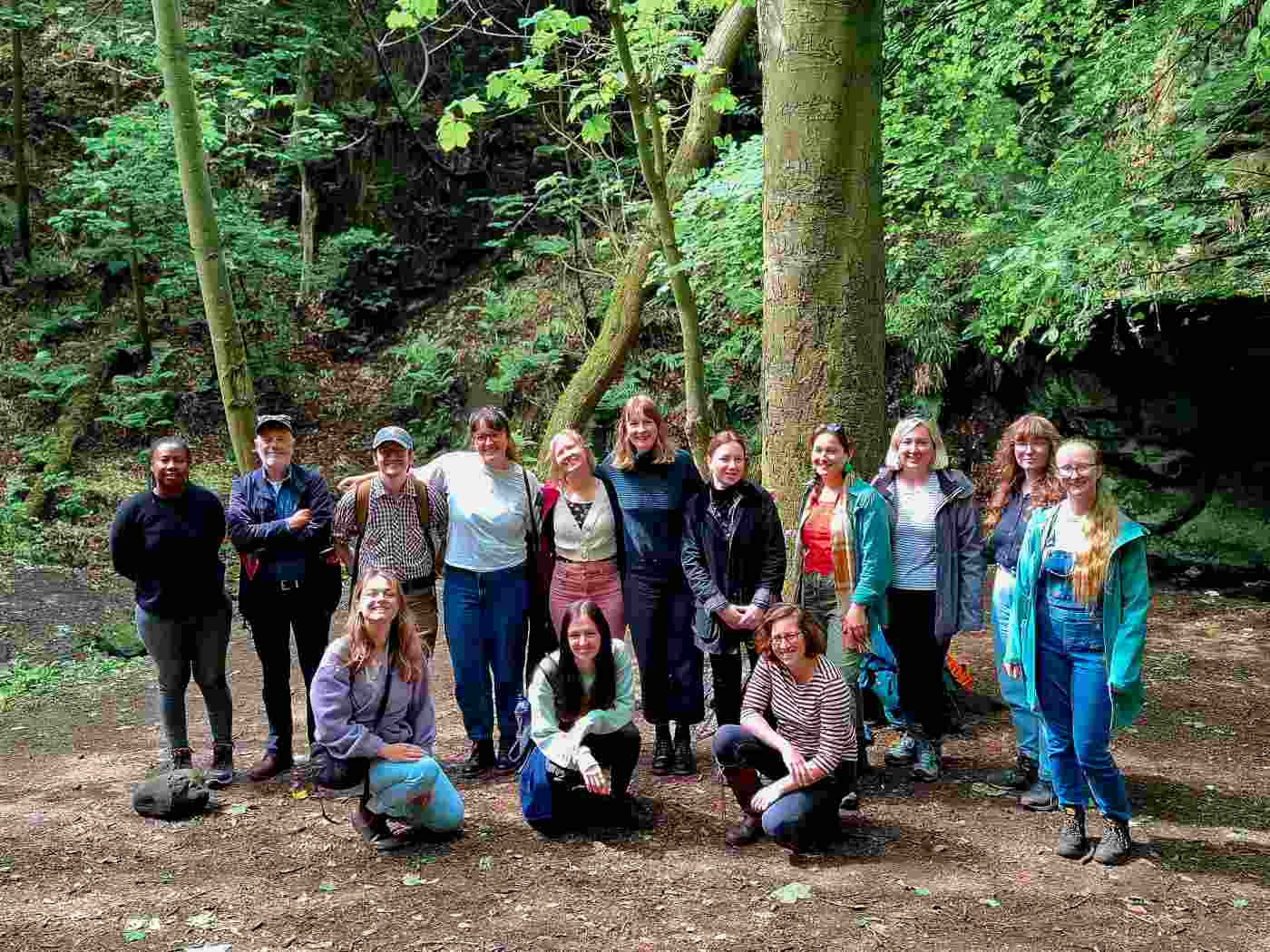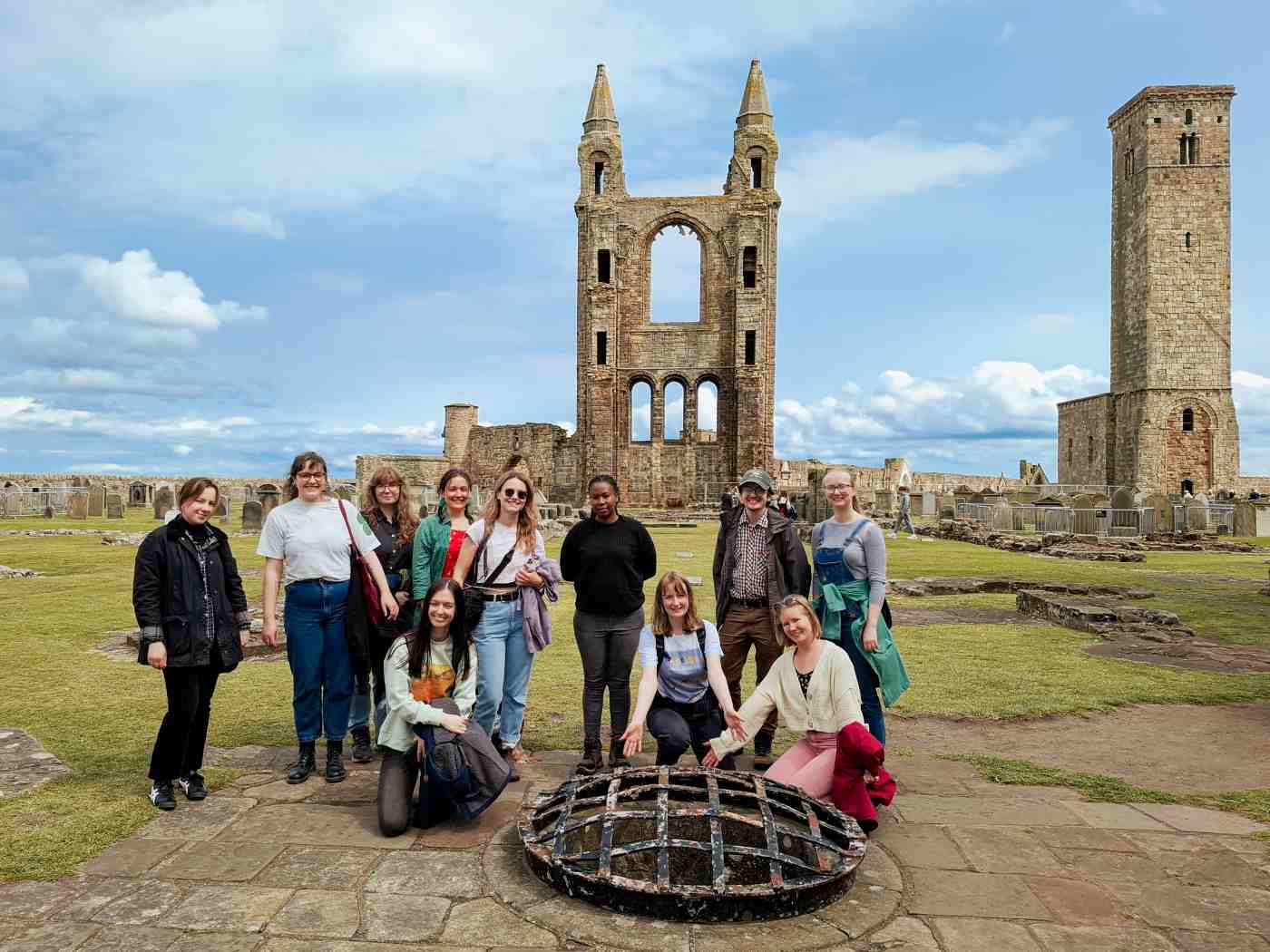Fife Lessons: A Postgraduate Trip to the Neuk of Fife
Published: 3 July 2025
A day of exploration along the Fife coast
Following the success of our Aberfeldy trip in February, a group of postgraduate researchers from our department set out on 31 May, trading screens, books, and the usual research routines for a day of exploration along the Fife coast. The trip was designed not only as an opportunity to engage with the region’s rich heritage, but also as a space for interdisciplinary conversation, reflection, and community building.
Our first stop was the coastal village of Pittenweem, known for its long-standing fishing traditions and artistic community. Beneath its quiet streets lies St Fillan’s Cave, a site of religious and historical significance dating to the 7th century. Traditionally associated with St Fillan, a missionary who played a role in the Christianisation of the Picts, the cave has served many functions over the centuries: from a sacred retreat to a local curiosity. Its stillness offered a meditative start to the day. A restorative pause followed at the Cocoa Tree Shop, where we warmed up with hot chocolate before continuing inland.
Next, we visited Dunino Den, a wooded site just south of St Andrews that carries traces of pre-Christian ritual and continued spiritual significance. Carvings of Celtic crosses, an ‘altar stone,’ and small votive offerings contributed to the site’s striking ambience. Standing beside the burn, we reflected on how certain places resist fixed interpretation, offering instead a sense of layered meaning and ongoing human connection.
In the early afternoon, we arrived in St Andrews, a town central to Scotland’s medieval ecclesiastical history. After a windswept lunch on the beach – shared with, and partially defended from, the local seagulls – we visited the ruins of St Andrews Cathedral. Once the largest and most important religious site in Scotland, the cathedral functioned as a major centre of pilgrimage until the Reformation. Though much of the structure is now in ruins, its presence remains powerful, revealing how spiritual, political, and architectural histories converge in place.
A short walk away, St Andrews Castle offered further insight into the region’s significant, though often turbulent, past, from ecclesiastical power struggles to military sieges. Of particular interest were the remnants of the mine and counter-mine, a dramatic example of siege warfare tactics, and the castle’s strategic coastal location, which still affords remarkable views of the North Sea.
More than just a historical tour, the trip created valuable space for connection between researchers at different stages of their postgraduate journeys. Walking between sites, sharing meals, and discussing our research in a more relaxed setting fostered a renewed sense of community and collaboration. For many of us, it offered an opportunity to think beyond our individual projects and consider broader questions of place, time, and interpretation.
By the time we returned to Glasgow – tired, windswept, and content – we brought back not just photographs and memories of seagull-defence tactics, but a renewed appreciation for the landscapes we study and the colleagues with whom we share this journey. Sometimes, the most meaningful academic moments happen not in front of a screen, but beside a cave, a cathedral, or the sea. A huge thank you to the department for supporting this trip and making it happen!
First published: 3 July 2025
<< Latest news



